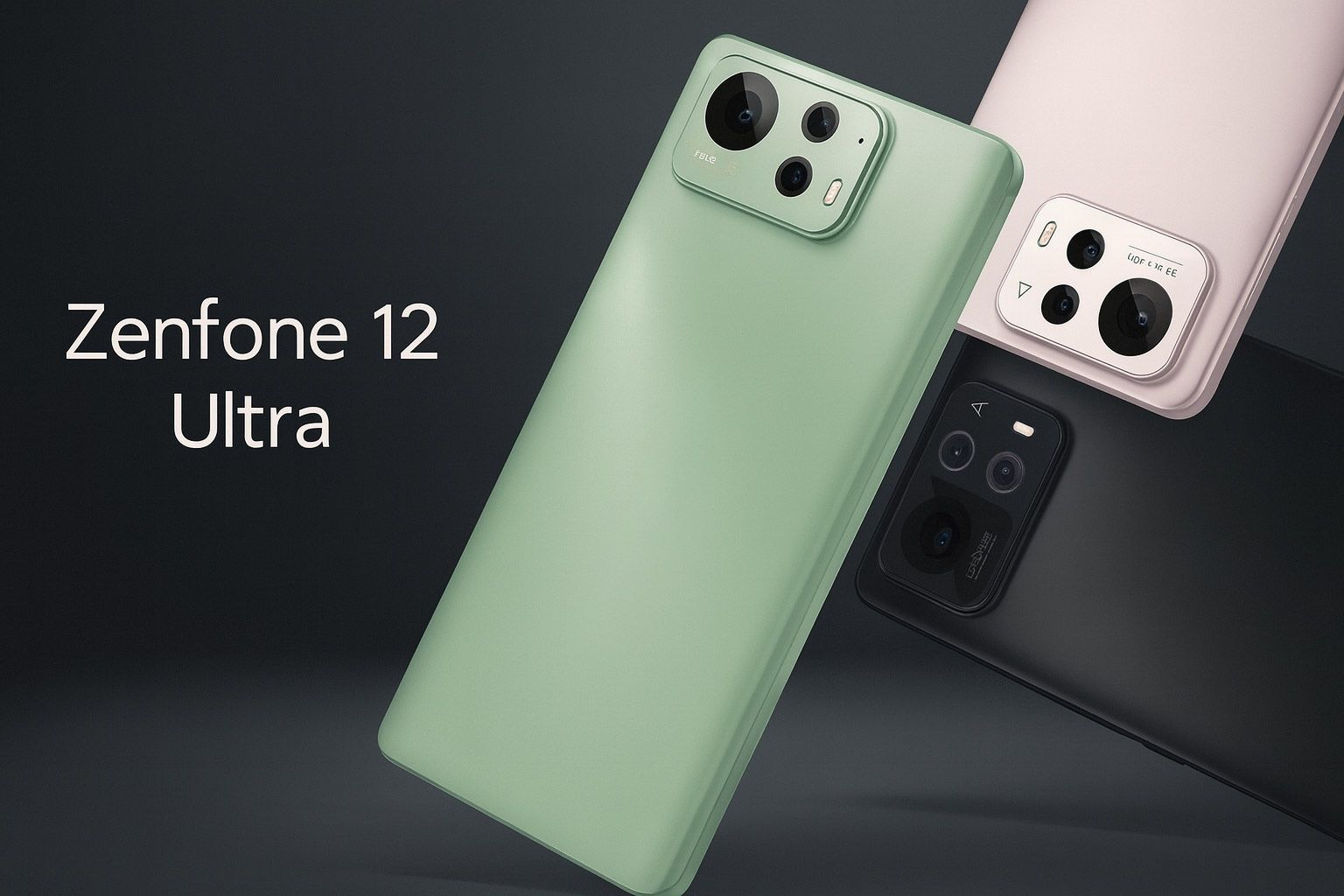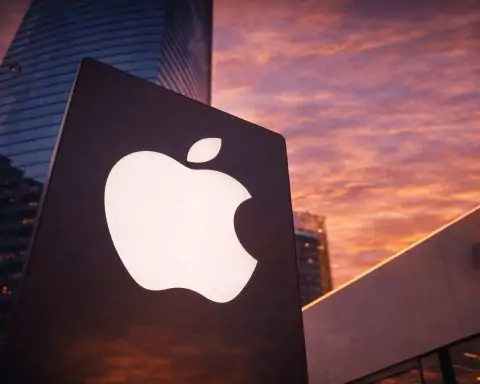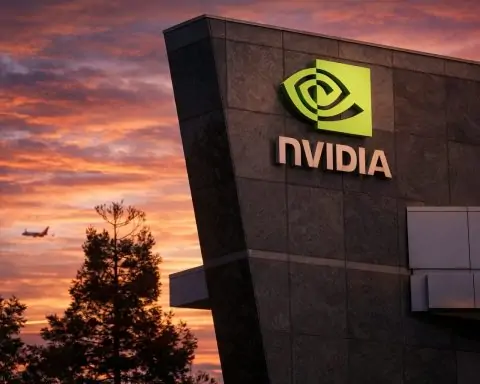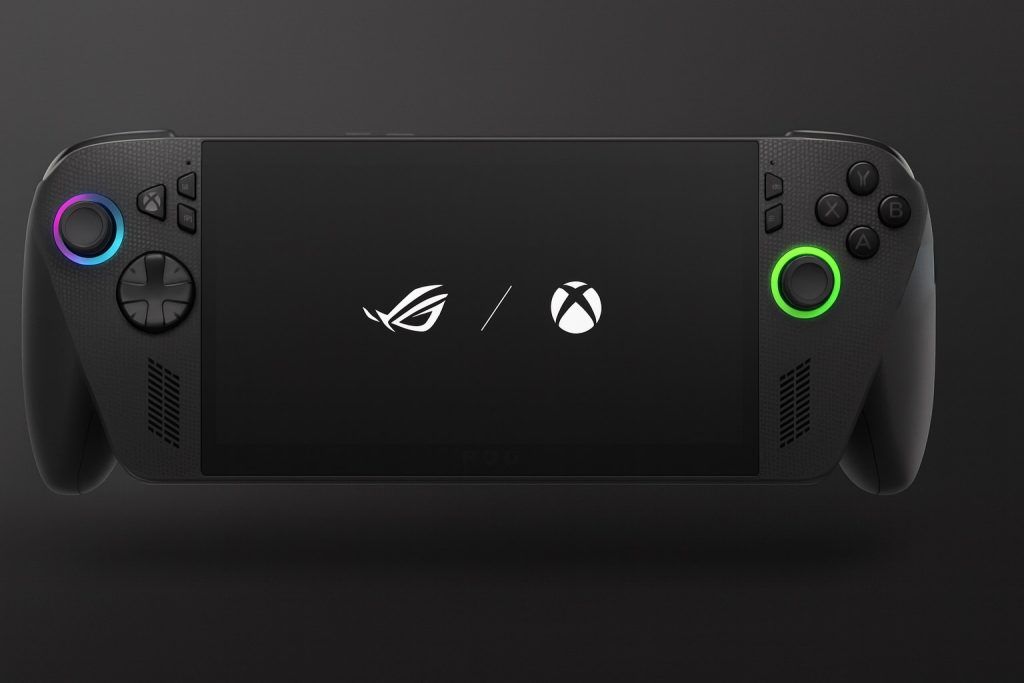- High-Octane Performance: Packs Qualcomm’s new Snapdragon 8 Elite 3nm chip with up to 16GB RAM, delivering blazing speed – one of 2025’s fastest phones in benchmarks [1] [2]. It even edges out some rivals (and nearly Apple’s A18) in certain tasks [3].
- Big, Bright Display + Audio Perks: 6.78-inch Samsung AMOLED LTPO screen (1080×2400) at 1–120Hz (boosting to 144Hz for games) – vibrant colors and insanely bright at 2500 nits peak [4] [5]. Bonus: It’s one of the last flagships with a 3.5mm headphone jack and excellent Dirac-tuned audio [6] [7].
- Robust Build, Bulky Feel: Sleek matte glass design with recycled aluminum frame and IP68 water resistance [8] [9]. But it’s heavy (220 g) and a two-hand grip – Asus ditched its compact Zenfone heritage, making this a big slab akin to gaming phones [10] [11]. The look is clean but somewhat plain for a €1,099 device [12].
- Triple Camera w/ Gimbal OIS: 50 MP Sony Lytia 700 main sensor with 6-axis gimbal stabilization, 13 MP ultrawide, 32 MP 3× telephoto [13] [14]. Main camera yields good shots and super-steady video [15] [16], but overall camera performance trails other Ultra-flagships in detail and low-light [17] [18]. 4K60 video is limited to the main lens only, hampering versatility [19].
- All-Day Battery, Fast Charging: Giant 5,500 mAh dual-cell battery easily lasts a heavy day [20]. Supports 65W wired PD 3.0 charging (full charge ~45 min [21]) and 15W wireless Qi 1.3 [22]. (No charger in-box, following industry trend [23].) Despite the capacity, rivals like Samsung squeezed better endurance from smaller batteries [24] [25].
- Android 15 + AI Features: Runs a near-stock ZenUI on Android 15 – snappy, clean, and bloat-free [26] [27]. Asus piled on new AI tricks: on-device AI Transcription, Live Translate, Magic Fill object eraser, Unblur, “Circle to Search” with Google, etc. [28] [29]. Most AI tools can run offline on the 8 Elite NPU (after hefty model downloads) [30] [31]. Cool ideas, but many are beta-level and not as polished as Google’s or Apple’s AI features [32] [33].
- Software Support Concerns: Only 2 years of Android OS updates promised (plus 5 years security) [34] [35] – a shortcoming for a ~$1,100 phone. Competitors now offer 4–7 years of updates, leaving Zenfone behind [36] [37]. This, and Asus’s past slow update track record [38], gives buyers pause.
- Price & Availability: Launched at €1,099 (16GB/512GB) – early buyers got €100 off [39]. That undercuts many ultra-flagships (cheaper than Samsung’s Galaxy S25 Ultra by several hundred euros) [40]. However, it’s region-limited: released in Taiwan, HK and Europe; no U.S. launch “at this moment” [41] [42] (and likely won’t reach the US, per Asus) [43].
A Closer Look at Asus’s Zenfone 12 Ultra
The Asus Zenfone 12 Ultra aims to deliver an “ultra” experience in 2025’s flagship arena, blending top-tier specs with a heavy dose of AI-powered features. It’s essentially a de-gamer-ified ROG Phone at heart – Asus took its Republic of Gamers hardware formula and wrapped it in mainstream attire [44] [45]. The result is a formidable Android phone on paper, but one that faces stiff competition from more refined rivals. Below, we break down the design, performance, cameras, and how it stacks up against the likes of Samsung, Google, Apple, and even Asus’s own past hits.
Design & Build: Premium Materials, Unassuming Style
At first glance, the Zenfone 12 Ultra doesn’t scream “Ultra.” It has a simple matte glass back (Gorilla Glass 3, notably – the front is tougher Victus 2) [46] [47] and an aluminum mid-frame made from 100% recycled metal [48]. The build quality feels solid and premium, with tight tolerances and IP68 water/dust resistance for peace of mind [49]. Asus also offers three muted colorways – Sage Green, Ebony Black, and Sakura White – aiming for sophistication over flashy looks [50] [51].
However, size and weight are immediately noticeable. At 163.8×77.0×8.9 mm and 220 g, this phone is hefty and large [52] [53]. It’s taller and bulkier than many flagships, and a far cry from the compact 5.9-inch Zenfones of years past. (In fact, Asus confirmed there’s no compact Zenfone 12 – the Zenfone 10 likely was the last small model [54].) One-handed use is tough; this is a device for those who prefer big-screen immersion and don’t mind pocket-busting dimensions.
Design-wise, reviews note the Zenfone 12 Ultra is conservative. It inherited a lot from last year’s Zenfone 11 Ultra (which itself followed ROG Phone cues) [55]. The camera bump is a rectangular island that, while housing serious optics, looks a bit awkward and protruding [56] [57]. The aesthetics are clean but “bland” – there’s no distinctive flair to make it stand out as a $1000+ flagship [58]. As TechRadar quips, it’s a blocky phone that doesn’t quite earn the stylish ‘Ultra’ swagger of some rivals [59] [60].
On the positive side, durability is decent (aluminum frame, Gorilla Glass Victus 2 up front [61]), though the glass back is prone to cracking if dropped hard [62] [63]. Asus oddly chose an older Gorilla Glass 3 for the rear, which in testing led to spiderweb cracks from even a moderate drop [64]. Using the included bumper case (a beefy RhinoShield) is advisable [65] – third-party case options are limited due to the phone’s niche status [66].
Notably, the Zenfone’s USB-C port is off-center along the bottom edge (a quirk from its ROG-derived layout) [67]. This doesn’t affect charging, but if you use gamepad accessories or docks, the offset port might be less convenient. The phone’s stereo speakers are loud and bassy, though slightly less crisp than the Galaxy S25 Ultra’s output according to one comparison [68] [69]. And yes – bless Asus – there’s still a headphone jack here, something virtually extinct in modern flagships. Audiophiles will appreciate the built-in 32-bit DAC and Dirac tuning for rich sound output [70] [71].
Display: High Refresh, High Brightness (But “Only” 1080p)
The Zenfone 12 Ultra sports a 6.78-inch Samsung E6 AMOLED display that checks nearly all the flagship boxes [72] [73]. It’s an LTPO panel that dynamically scales from 1 Hz up to 120 Hz for smooth scrolling, with the option to boost to 144 Hz in supported games for extra fluidity [74] [75]. The decision to stick with a 1080p resolution (2400×1080) has raised some eyebrows – at this screen size, that yields ~388 ppi, whereas many ultra-tier phones use QHD+ panels around 500 ppi. The Verge bluntly noted 1080p is “a little low for a panel of this size” [76]. In practice, though, text and images still look sharp, and the lower resolution helps battery life and performance.
Where the display truly shines (literally) is brightness. Asus claims up to 2,500 nits peak for HDR content [77], and independent tests measured ~2,199 nits at 20% APL (partial screen) – on par with Samsung’s latest – and ~1,572 nits at full-screen 100% APL [78] [79]. Translation: it’s blazing bright. Outdoor visibility in direct sun is no problem [80] [81]. Contrast and colors are excellent out of the box; Asus’s calibration and multiple color modes let you dial in a vivid or natural look as you prefer [82]. The Zenfone’s color accuracy is actually superb (Delta E ~1.5 in testing, beating some Samsung tuning) [83] [84]. Gorilla Glass Victus 2 protects the screen against scratches and drops [85] – though as one reviewer wryly noted, Asus “should have used the same coating on the back” for better drop resiliency [86].
The viewing experience is otherwise top-notch: HDR10+ is supported, as is Always-On display (with some admittedly limited clock/customization styles) [87] [88]. The bezels are slim all around, giving an immersive edge-to-edge feel [89]. The in-display fingerprint reader is speedy and well-positioned (low enough to reach comfortably) [90] [91]. High refresh gaming is smooth as butter – titles that support 144Hz really fly. And if you’re into media, the combo of that bright OLED and stereo sound (plus the option for wired hi-fi audio) makes the Zenfone 12 Ultra a pleasure for YouTube, Netflix, and games.
Bottom line: while it lacks the ultra-high resolution or LTPO 1-144Hz range of some competitors (the Galaxy S25 Ultra has a larger 6.9″ 1440p screen and similarly adaptive refresh [92] [93]), the Zenfone’s display holds its own. Only the most spec-obsessed will lament it’s “only” FHD+, as it excels in brightness, color, and smoothness – crucial attributes for daily use [94] [95].
Performance: Snapdragon 8 Elite Unleashed
Under the hood, Zenfone 12 Ultra is an absolute powerhouse. It debuts the Qualcomm Snapdragon 8 Elite – a new 3 nm octa-core flagship SoC clocked up to ~4.3 GHz (4.3 GHz in the standard version, and Samsung gets a tweaked 4.47 GHz “for Galaxy” edition in the S25 series) [96] [97]. Backed by 16 GB of fast LPDDR5X RAM and UFS 4.0 storage, this phone chews through tasks and heavy apps without breaking a sweat [98] [99]. In fact, multiple reviewers dubbed it the fastest Android phone of 2025 so far in real-world feel [100] [101]. Apps open instantly, multitasking is seamless, and even demanding 3D games maintain high, stable frame rates.
Benchmark numbers tell a similar story: Geekbench 6 scores around ~3116 single / 9824 multi [102] [103], leapfrogging last-gen chips and edging close to Apple’s A-series in single-core performance [104]. In PCMark Work 3.0, the Zenfone tops 25,000+ points, well ahead of many 2024 devices [105] [106]. Graphics performance is equally stellar, with ~4780 in 3DMark Wildlife Extreme (and ~29.9 FPS in Solar Bay) – basically, any game from PUBG to Genshin Impact runs buttery smooth on max settings [107] [108].
Interestingly, Asus’s thermal tuning favors sustained performance. Under stress, the Zenfone 12 Ultra throttles less than some competitors. For example, in prolonged 3DMark runs, it started a bit lower than a Galaxy S25 Ultra (which has a slightly overclocked chip) but fell off less with heat, ending up faster once the Samsung throttled down [109] [110]. The phone can get warm under heavy load (hitting ~46°C in one torture test) but never alarmingly hot [111] [112]. Asus’s experience with gaming phones clearly helps here – the cooling solution keeps the Snapdragon 8 Elite running at high clocks longer [113] [114].
The storage configuration is generous: 512GB UFS 4.0 standard in global markets (some regions also get a 256GB model) [115] [116]. There’s no microSD slot – not unusual for a flagship nowadays. Connectivity is bleeding-edge: Wi-Fi 7 ready, Bluetooth 5.4 with aptX Lossless, NFC, dual 5G SIMs plus eSIM support [117] [118]. Call quality and 5G reception are solid; testers reported no issues on networks, and the phone supports a wide array of global 5G bands [119] [120].
Crucially, Asus didn’t skimp on gaming features either: the software includes a Game Genie overlay to monitor performance and toggle that 144Hz mode, plus there’s a customizable back double-tap gesture (you can map it to actions, and it even works through a case) [121] [122]. Haptics are strong and precise – a good vibration motor that provides satisfying feedback (PhoneArena found it on par with Samsung’s haptics) [123] [124]. So whether you’re blasting through races in Asphalt or juggling multiple productivity apps, the Zenfone 12 Ultra delivers ultra-smooth performance.
One potential drawback: thermal limits are a tad stricter than on Asus’s ROG Phone 9 Pro (the full gaming sibling), meaning the Zenfone won’t run quite as hot or as wild in prolonged sessions [125] [126]. But for mainstream users, that’s probably a positive – it keeps the frame comfortable to hold and prevents excessive heat buildup, while still offering top-tier speeds. All told, this device is overkill for everyday use and will handle anything you throw at it well into the future. If raw power is your priority, Zenfone 12 Ultra won’t disappoint – it’s “a certifiable beast” in the words of one reviewer [127] [128].
Software & AI: ZenUI Goes Minimalist with a Side of AI Smarts
Asus’s software approach on the Zenfone 12 Ultra will please Android purists. ZenUI on Android 15 is lean, fast, and very close to stock Android in look and feel [129] [130]. There’s no heavy reskin or duplicate bloatware apps; the interface is clean with Material You touches and smooth animations. Long-time Asus fans will recall that ZenUI used to be flamboyant years ago – now it’s pared down to focus on useful additions only. Android Central’s review praised it as “one of the best software interfaces of any Android phone today,” noting it strikes a great balance between minimalism and customization [131] [132]. Indeed, you’ll find a ton of toggles for power users (from Edge Tool side shortcuts to Twin Apps cloning, a Smart Key shortcut button, etc.) but nothing feels unnecessary [133].
Android 15 out of the box brings its own improvements, and Asus optimizations make the UI buttery. Importantly, no bloat means no weird performance quirks – the Zenfone flies through menus. And with 16GB RAM, you can keep dozens of apps in memory. Asus’s light touch on software extends to promised updates: the company confirmed “at least 2 major updates and 5 years of security updates” for the Zenfone 12 Ultra [134]. In practice, that likely means it will get Android 16 and 17 (through 2026), but not beyond – which, as noted, is behind what Samsung (4+ years), Google (5+ years), and OnePlus (5 years) are offering on their flagships [135] [136]. This short update lifespan is one of the Zenfone’s biggest weak points for long-term value, and reviewers didn’t mince words about it being “abysmal for a phone released in 2025” [137]. If you keep phones for 3-4+ years, bear that in mind.
The headline differentiator in software is Asus’s push for AI features. The Zenfone 12 Ultra comes loaded with an “AI Studio” of sorts – a suite of smart features leveraging on-device AI and cloud. Some highlights include:
- AI Call Translator 2.0: Real-time translation of calls in your language of choice. Impressively, it works with any voice or video call app (by capturing audio and overlaying translations) [138] [139]. Great for international business or multilingual families.
- AI Transcript 2.0: Live transcription of meetings or lectures, right on the device – essentially a built-in Otter.ai. It can produce meeting summaries too [140].
- AI Article & Document Summary: You can “share” any article or PDF to the Asus AI Summary tool, and it will condense it into key points [141] [142]. Unlike Samsung’s browser-limited approach, Asus’s works system-wide and even stores your saved summaries for later [143] [144].
- Google Circle to Search: A collaboration with Google – draw a circle around text or an object on screen, and it triggers a contextual search (like Google Lens combined with Assistant) [145] [146].
- AI Magic Fill (beta): Think of it as a built-in Photoshop Heal/Generative Fill – remove unwanted objects from photos and the AI will fill in the background intelligently [147] [148]. It works offline but is a hefty 1.4GB download and can leave artifacts, so results are hit-or-miss in this early iteration [149] [150].
- AI Photo Unblur: Sharpen up blurry shots using the on-device engine (similar to Google’s Photo Unblur) [151] [152]. Useful for salvaging quick snaps that came out soft.
- AI Portrait Video 2.0: Enhanced bokeh video mode on the main cam with adjustable aperture effects (like Apple’s Cinematic Mode, but with Asus’s twist) – it adds bokeh ball lighting for nighttime ambiance [153] [154]. It looks cool, though edge detection can falter if you pixel-peep edges of subjects [155] [156].
- AI Tracking (Video): The camera can lock onto a moving subject and automatically zoom/pan to keep it centered in frame [157] [158]. Paired with the gimbal OIS, this yields impressively steady action videos, ideal for vlogging or recording kids/pets on the move [159].
- Semantic Image Search: The gallery app can do AI-powered searches (e.g. type “beach sunset” and it recognizes relevant photos without manual tagging) [160] [161].
Under the hood, many of these are enabled by the Hexagon NPU in the Snapdragon 8 Elite. Asus allows most to run fully on-device, enhancing privacy and speed once you download the necessary models [162] [163]. They even include a local LLM (Meta’s Llama 3 8B model) for those text summarizations [164] [165]. There is a daily “cloud AI service quota” for using cloud fallback (likely to prevent abuse of their servers), but typical users won’t hit it [166]. If offline, the phone will automatically use the on-device engine. One quibble: to use these offline features, you must download large files (e.g. a ~4.6GB pack for the LLM, 1.3GB for Magic Fill) [167] [168]. It’s a one-time setup, but not exactly light on storage or data if you’re on a metered connection.
In day-to-day use, the AI features range from genuinely handy to gimmicky. Reviewers found things like document scanning, transcribing, and article summarizing to work quite well, providing convenience beyond stock Android [169] [170]. The fact it works offline and in any app is a plus over Samsung’s more limited Bixby/OneUI implementations [171]. On the other hand, some camera AI tricks (Magic Fill, etc.) still feel beta-quality, and there’s an overarching sentiment: these software extras alone don’t make the phone “Ultra.” As Android Authority put it, “beta AI features, however bountiful, are no substitute for hardware upgrades” [172] [173] – a pointed critique that Asus focused on AI instead of, say, improving the camera hardware or offering longer updates.
Overall, Zenfone 12 Ultra’s software is smooth and modern, and its AI toolset is one of the most comprehensive on any phone (rivaling Google’s Pixel “Assistant” features and Samsung’s new AI apps) [174]. If you’re an early adopter of AI, you’ll have fun experimenting with these capabilities. Just be aware that outside the Asus bubble, Google and others are also integrating AI deeply (the Pixel 9 Pro/XL with Gemini AI features, for example) [175] – and often with more refinement. As for the core experience, the Zenfone’s near-stock Android and fast updates (for two years, at least) make it a joy to use out of the gate.
Cameras: Improved Gimbal Stabilization, Solid Main Camera – But Not Best-in-Class
Asus made cameras a focus in marketing the Zenfone 12 Ultra, touting its “Cinema Master” credentials and the 4th-gen gimbal OIS. The hardware setup on the back is a triple-camera array:
- 50 MP Main – Sony Lytia 700 sensor (1/1.56″ size) with f/1.9 aperture, 23.8 mm equivalent lens [176] [177]. This shooter has the 6-axis Hybrid Gimbal Stabilizer 4.0, giving up to ±5° of physical shake compensation (a 66% improvement over last gen) [178] [179]. It bins to 12.5 MP for 2.0 μm effective pixels, and features dual PDAF autofocus.
- 13 MP Ultrawide – 120° field of view, f/2.2, with a free-form lens to reduce edge distortion [180] [181]. No OIS here; it’s a smaller sensor without autofocus (so no macro focus trick), but useful for broad scenery.
- 32 MP Telephoto – 3× optical zoom (65 mm equivalent), f/2.4, and it does include OIS [182] [183]. Uniquely high-res for a tele lens, though it outputs 8 MP images via binning. Digital zoom goes up to 30×, but anything beyond ~5–6× struggles (given no periscope lens) [184] [185].
- 32 MP Front Camera – Punch-hole selfie cam, RGBW sensor that bins to 8 MP (1.4 μm pixels) for better light capture [186]. It’s wide (22 mm equiv.) and even does a decent software-assisted portrait mode.
Image Quality (Stills): The main camera is the star. In good lighting, it produces detailed shots with pleasing dynamic range and accurate colors [187]. The move to the new Lytia sensor and improved gimbal OIS means low-light shots are less blurry and video is smoother when moving [188] [189]. By Asus standards, this is their best camera yet [190]. That said, when judged against other 2025 flagships, it falls a bit short. Several reviewers noted the Zenfone’s image processing still tends to over-sharpen and introduce noise, especially in complex textures like foliage [191] [192]. HDR performance is hit-or-miss: sometimes shadows get crushed or highlights blow out where a Pixel or Galaxy would balance better [193] [194]. In low light, the main sensor holds up fairly well – certainly improved over Zenfone 11 Ultra – but photos can have high contrast and sometimes a “flattened” look with blown highlights compared to the more advanced night modes of phones like Vivo’s X200 Pro or Pixel 9 Pro [195] [196].
The ultrawide camera is serviceable: it captures a dramatic field of view with correction for fisheye distortion [197]. But it’s a clear step down from the main – details are softer, dynamic range narrower. In tricky lighting (backlit scenes, low light), the ultrawide struggles with noise and blown highlights [198] [199]. It lacks the autofocus and larger sensor that some rivals’ ultrawides have, so it won’t double as a macro cam, and night ultrawide shots are just OK. The telephoto lens provides useful 3× optical zoom which is handy for portraits and closer shots without moving. Thanks to OIS and the relatively high 32MP sensor, 3× and even ~5× shots in daylight are fairly good [200] [201]. However, beyond 5× it’s purely digital crop – by 10× or more, the Zenfone is clearly behind a phone like the Galaxy S25 Ultra that has a dedicated periscope lens (Samsung’s 10MP 10× periscope produces much cleaner zoom at long range) [202] [203]. In fact, side-by-side, a 10× zoom from Zenfone 12 Ultra vs S25 Ultra is night-and-day: the Zenfone’s image is noisy and low-detail, where Samsung’s retains surprisingly good clarity [204] [205]. So, zoom is one area where Asus can’t touch the “ultra zoom” flagships.
Color and processing consistency between lenses is another point: you’ll notice shifts in color tone and contrast when switching from main to ultra-wide to tele [206] [207]. Asus tried to mitigate this (even adding an “Photographic Style” color tuning option, à la iPhone, so you can set a preferred contrast/saturation profile) [208], but the differences are still there. Skintones, for example, can look nice on the main camera but a bit off on the ultrawide in the same scene. Portrait mode uses the tele lens at 3× for a natural perspective; it’s decent, though edge detection is only average (fine details like hair can get blurred).
Video & Stabilization: This is a strong suit of the Zenfone 12 Ultra, thanks largely to the gimbal stabilizer. The main camera’s stabilized module, combined with EIS algorithms (HyperSteady), produces super-smooth video, even when walking or panning [209] [210]. It’s genuinely impressive – you can almost leave your gimbal at home. The phone can shoot up to 8K@30fps on the main cam, and 4K@60 on main (4K@30 on ultrawide) [211] [212]. Footage from the main cam is crisp and nicely stabilized; colors are a tad cool, but you can tweak with those new color presets. The AI Tracking works as advertised: start recording a subject (person or pet) and the phone can lock on and zoom to keep them centered, which is great for action shots [213] [214]. The portrait video mode records 4K with a background blur – fun for artistic shots, and it’s about on par with others’ software bokeh (edges can still show artifacts on close inspection, but overall effect is pleasing) [215] [216].
One big limitation: as noted, 4K60 is only available on the main camera [217]. Neither the ultrawide nor tele can do 60fps at 4K, they drop to 4K30 max. This is a bummer for those who like switching lenses during filming or want 60fps consistency – it “severely inhibits the versatility” for video enthusiasts, one reviewer complained [218]. The telephoto also cannot record in 8K (no surprise given sensor), and slow-motion tops out at 4K120 or 1080p240 [219], which is fine for creative clips. The audio in videos is quite good thanks to “AI Noise Reduction” that filters background sounds and boosts voices [220]. Asus leveraged OZO Audio tech and multiple mics for clear stereo recording [221] [222].
Overall, the Zenfone 12 Ultra’s cameras are good, not great – certainly functional but not exciting in the context of 2025’s best [223] [224]. If you’re coming from an older phone (2021 or prior), you’ll be happy with the upgrade in quality [225] [226]. But if you’re comparing directly to the camera kings (Google Pixel 9 Pro/9 Pro XL, Samsung S25 Ultra, Vivo X200 Pro, etc.), Asus still lags in computational photography and lens hardware. As Android Central put it, “the cameras just aren’t good enough for what it costs,” especially the secondary lenses [227] [228]. For casual shooters, the Zenfone will do fine – it captures share-worthy pics and very stable videos of everyday moments. Just don’t expect it to outclass a Pixel in Night Sight or a Galaxy in long zoom or an iPhone in Dolby Vision video. It’s an area Asus “needs to invest more in if it really wants to elevate the Zenfone” to true Ultra status [229] [230].
Battery Life & Charging: Endurance Champ or Just Average?
On paper, a 5,500 mAh battery in a 6.78″ phone is huge – larger than most competitors (Galaxy S25 Ultra has 5,000 mAh, Pixel 9 Pro ~5,270 mAh, iPhone 15 Pro Max ~4,400 mAh). Asus carried over this big battery from the Zenfone 11 Ultra, and combined with the efficiency gains of the Snapdragon 8 Elite (3nm) and LTPO screen, one would expect excellent battery life. The company even claims “over 26 hours of usage on a single charge” in mixed use [231] [232].
In real-world testing, the Zenfone 12 Ultra does last comfortably all day for the vast majority of users. Reviewers consistently reported ending heavy days with ~20-30% left, and no “battery anxiety” about it dying before night [233] [234]. Screen-on times north of 7-8 hours are achievable with moderate use. One lab test found ~16 hours of continuous web browsing and ~12 hours of constant video playback – strong results [235] [236]. Notably, continuous gaming lasted nearly 10 hours in one benchmark, which is excellent [237] [238]. It seems the new chip’s efficiency and Asus’s tuning did improve some scenarios; Android Authority saw 15–20% longer web and video runtime compared to the Zenfone 11 Ultra [239] [240].
However, the Zenfone 12 Ultra isn’t quite the undisputed battery champ. In head-to-head endurance tests, Samsung’s Galaxy S25 Ultra with a smaller battery actually outlasted the Zenfone in several categories [241] [242]. For example, the S25 Ultra managed 20h49m video playback vs ~16h03m on Zenfone, and slightly longer web browsing too [243] [244]. Asus did win in one test (YouTube streaming, interestingly, where Samsung phones often underperform) [245] [246]. The upshot is that while the Zenfone’s battery life is very good – easily a full day+, and among the better phones this year – some efficiency-focused rivals can still edge it out. The Vivo X200 Pro was noted as a longevity king, for instance, beating the Zenfone for longest-lasting device in one reviewer’s 2025 tests [247] [248].
Charging is an area Asus fans will celebrate: the Zenfone 12 Ultra supports 65W wired fast charging (USB Power Delivery PPS). It’s capable of a 0–100% charge in roughly 44–45 minutes with a proper 65W charger [249] [250]. That’s quick, if not the absolute fastest (some Chinese phones do <30 min, but those often use proprietary chargers). Importantly, Asus uses standard USB PD 3.0/QC5, so you can use any good PD charger – no need for a special brick [251] [252]. However, Asus no longer bundles a charger in the box [253] [254], following Apple/Samsung’s eco-friendly trend. This irked some longtime users, but it’s become the norm in the premium segment.
The Zenfone also includes 15W wireless charging (Qi 1.3 standard) [255] [256]. It’s not the newer Qi2 (which offers MagSafe-like magnet alignment), and there are no magnets here – so just standard wireless pads will do. At 15W, it’s not particularly fast (around 1.5–2 hours for a full charge). Think of wireless as a convenient desk or overnight top-up. At least Asus did include wireless – previous Zenfones sometimes skipped it. There’s also reverse wireless charging support around 5W if you need to top up earbuds on the go.
One thing to note: the battery is a dual-cell design (2×2750 mAh), which helps with faster charging and thermal distribution [257] [258]. The phone supports advanced charging controls too – e.g., scheduled charging or bypass charging while gaming to preserve battery health (features inherited from ROG phones). This kind of control is great for battery longevity.
In summary, battery life on the Zenfone 12 Ultra is strong – easily a full-day device with a cushion, though not a two-day phone unless you’re a light user. And thanks to 65W charging, topping up is quick when you do need it (15 minutes gives roughly ~50-60% charge). Wireless charging is a welcome convenience. It’s a well-rounded power package, with only Samsung’s latest and a few others outperforming it by a margin in efficiency. If battery endurance is one of your must-haves, Zenfone 12 Ultra “does everything else OK enough to avoid disappointment” in that regard [259] [260] – to quote Android Authority’s verdict – it nails the battery and charging experience expected of an ultra-phone.
Pricing, Availability & Value: A Mixed Bag
The Zenfone 12 Ultra launched at €1,099 for the lone 16GB RAM / 512GB storage configuration in Europe (that’s roughly $1,140 USD) [261] [262]. In Taiwan (Asus’s home market) there are additional 12GB/256GB variants at slightly lower cost, but internationally Asus kept it simple with the maxed-out spec. Early buyers in some regions got a launch promo of €999 (about $1,035) if purchased by end of February 2025 [263] – effectively a €100 discount to entice fans [264].
Comparatively, competing flagships often start higher for similar RAM/storage. For instance, the Samsung Galaxy S25 Ultra starts around €1,399–€1,499 in Europe for a base model (and closer to €1,699 for a 512GB model), and the iPhone 15 Pro Max was about €1,449 for 256GB (and well over €1,600 for 512GB). The Zenfone 12 Ultra undercuts these by a significant margin – hundreds of euros less than an S25 Ultra [265] [266]. It’s even cheaper than a Galaxy S25+ (the non-Ultra) which is around €1,199 [267] [268]. Asus is positioning it as a value flagship: you get maxed specs (512GB storage standard) for a price that many others charge for their 256GB models [269]. In fact, Tom’s Guide noted it costs about the same as a Google Pixel 9 Pro XL (which was €1,099 for 256GB), but Asus gives double the storage by default [270] [271]. And compared to something like the OnePlus 13 (which launched at $899 for 16/256GB), the Zenfone is pricier but also offers more storage and slightly beefier features [272] [273].
So, on pure specs-to-price ratio, the Zenfone 12 Ultra is attractive in the flagship space. However, value is more than just specs, and this is where the picture gets complicated. The Zenfone is harder to buy in many places. Asus initially released it in Taiwan, Hong Kong, and select European countries [274]. North America isn’t getting it – Asus confirmed no U.S. release, making it “another big phone the US won’t get” [275] [276]. There’s no word on a UK launch either (as of August 2025), which likely means availability is limited. This could change if Asus decides to later bring units to the US via e-shop or Amazon (they hinted it’s possible but not planned yet [277]), but buyers in many regions would have to import it, with no local warranty or support. That inherently reduces its mainstream appeal and value proposition.
Additionally, while the Zenfone is cheaper than, say, an S25 Ultra, it also provides less in certain areas (cameras, software support, brand cachet, etc.). PhoneArena’s comparison put it bluntly: Samsung’s S25 Ultra is the clear winner overall with better camera system, extra features like the S Pen and desktop DeX mode, and a 7-year update promise, whereas the Zenfone gives you only 2 years updates and no unique hallmark like a stylus [278] [279]. They acknowledged the Zenfone is much cheaper, but still concluded “as much as we like what Asus usually does, this phone is not exactly it” in terms of delivering an Ultra-worthy experience for the price [280] [281]. In other words, you save money upfront with Zenfone 12 Ultra, but you might also be compromising on features that matter to you in a flagship.
From a broader perspective, if you’re spending around ~$1,000, alternatives abound: Google’s Pixel 9 Pro (or the larger 9 Pro XL) at ~$999 offers arguably the best camera software and 7 years of updates [282]; OnePlus 13 at $899 offers a well-rounded flagship with 5 years of updates and great cameras [283] [284]; and of course Apple’s iPhone 15 Pro Max (though slightly older by 2025) brings top-notch build, video recording, and a robust 5+ year support ecosystem. The Zenfone 12 Ultra is priced like a flagship and certainly performs like one, but its value is diminished by limited longevity and niche availability. If you can snag it at a discount (say that €999 launch price) and you prioritize having bleeding-edge silicon and battery, it’s a pretty good deal. But at full price, up against heavily marketed and feature-rich rivals, it risks feeling like a harder sell – a point echoed by multiple reviews calling it “easy to like, hard to recommend” [285] [286].
How It Stacks Up: Zenfone vs Other Flagships
To put Zenfone 12 Ultra in context, let’s compare it briefly to both its Asus predecessors and the major competitors in 2025:
- Zenfone 11 Ultra (2024): The 12 Ultra is very much an incremental upgrade. It keeps the same design language, display, battery, and even camera setup (aside from main sensor tweak) as the 11 Ultra [287] [288]. Main changes: new Snapdragon 8 Elite chip (vs last year’s 8 Gen 3), some refined design touches (smaller camera accents, new colors) [289], and all the new AI software. If you own the 11 Ultra, upgrading is hard to justify – “mostly the same hardware” and you could get many new software features via updates (if Asus provides them) [290] [291]. In fact, Android Authority suggested if you find a Zenfone 11 Ultra discounted, that might be a smarter buy because you’re not missing much [292] [293]. The 12 Ultra did address some 11 Ultra criticisms (better stabilization, improved efficiency), but it didn’t return to the beloved compact form of Zenfone 10 or add any wild new feature. Hence TechRadar dubbing it the “déjà vu phone” that doesn’t feel truly “Ultra” [294] [295].
- Zenfone 10 (2023): This was a completely different beast – a compact 5.9″ phone focused on delivering flagship specs in a small form. Asus shifting to only the “Ultra” model means there’s no direct Zenfone 12 equivalent to the Zenfone 10’s niche. If you prefer small phones, the Zenfone 12 Ultra simply isn’t an option. And with rumors that Zenfone 10 might have been the last compact Zenfone (which Asus denied discontinuing the line, but clearly, 2024 and 2025 saw no new mini model) [296], fans of small Android phones are out of luck here. The Zenfone 12 Ultra is for those who want large devices; Asus is seemingly positioning Zenfone Ultra as their sole flagship going forward, leaving the compact market perhaps to Asus’s own ROG Phone “FE” editions or nothing at all. (Some hoped for a non-Ultra Zenfone 12, but as of August 2025 none exists [297].)
- Samsung Galaxy S25 Ultra: One of Zenfone 12 Ultra’s chief Android rivals. Samsung’s latest Ultra (S25) is a powerhouse that brings a bit more of everything – a larger 6.9″ QHD+ display with S Pen stylus support, a quad-camera array including that 200 MP main and dual telephotos (3× & 5× periscope) for incredible zoom range, and the polished One UI software with unrivaled update support (4 OS updates, 7 years security) [298] [299]. In a direct comparison, the S25 Ultra wins in camera versatility and quality (especially zoom and consistency) [300] [301], matches or slightly beats battery life, and offers unique features like DeX desktop mode. It’s also more expensive (starting around $1300+). If camera and ecosystem are top priority, S25 Ultra is king – but you pay for it. The Zenfone 12 Ultra fights back with a lower price and arguably better sustained performance (less throttling under load) [302] [303], plus that headphone jack which some power users still love. Still, most reviewers concluded the S25 Ultra is the “clear winner” if money is no object [304] [305].
- Apple iPhone 15 Pro Max (and 16 Pro Max): Apple’s flagship as of 2025, while from late 2023, remains a benchmark. It has a smaller display (6.7″) but with higher pixel density (1290×2796) and Apple’s color-calibrated OLED. The iPhone’s A17 Pro chip (or A18 if considering the upcoming iPhone 16 series in late 2025) offers class-leading single-core performance, though the Zenfone’s Snapdragon isn’t far off in some respects [306]. The camera systems differ: iPhone 15 Pro Max introduced a 5× optical periscope and Apple’s computational photography yields very consistent results, especially in video where iPhone is generally considered the gold standard. Zenfone 12 Ultra can claim steadier video via gimbal, but iPhone’s 4K60 Dolby Vision footage and overall reliability are top-notch. iPhone also lacks a headphone jack and has slower charging (Apple’s ~27W vs Asus 65W), but offers a more premium build (titanium frame on iPhone 15 Pro Max) and the iOS ecosystem perks (apps, AirDrop, etc.). And of course, Apple provides 5+ years of iOS updates and high resale value. If you’re OS-agnostic and just want the “most polished”, an iPhone Pro Max is a formidable alternative – albeit without some of the niche features (no high refresh until iPhone 13 Pro, which it has, but iPhones don’t do things like on-device AI to the same degree). Choosing Zenfone over iPhone would likely come down to Android preference and the Zenfone’s specific feature set (headphone jack, faster charging, customization).
- Google Pixel 9 Pro / 9 Pro XL: Google’s late-2024 Pixels doubled down on AI and cameras. The Pixel 9 Pro (6.7″) and Pixel 9 Pro XL (rumored 7.2″ foldable or just larger variant) focus on camera excellence with Google’s computational prowess – they likely still produce superior low-light shots and smart features (Magic Eraser, real tone, etc.) arguably better than Asus’s implementations [307] [308]. The Pixel’s Gemini AI (in Tensor G4) powers on-device features somewhat akin to Asus’s, like call screening, live translation, etc., all deeply integrated. Pixel’s performance isn’t as high (Tensor chips emphasize AI over raw speed), so the Zenfone is a much better gaming device. But Pixel’s software support (7 years updates) and cohesive Google experience (timely updates, Pixel-exclusive features) give it an edge in longevity. Given Pixel 9 Pro launched at ~$999, similar price, many will prefer its camera and software reliability. Asus wins on brute hardware (faster chip, more RAM/storage, micro-optimizations for speed), and of course a headphone jack which Pixel dropped years ago.
- OnePlus 13: OnePlus made a comeback in 2025 with a strong flagship at $899 [309] [310]. It has the same Snapdragon 8 Elite (albeit maybe clocked slightly lower than Samsung’s variant), a refined design with a striking blue vegan leather option [311] [312], and an excellent camera system co-developed with Hasselblad. OnePlus 13 doesn’t have a gimmick – it’s just a very good all-rounder, and notably it promises 5 years of updates, beating Asus easily [313] [314]. It lacks wireless charging but costs a couple hundred less. If you don’t need the gimbal OIS or headphone jack, the OnePlus might be a smarter buy for many – it was even called “the new yardstick” among 2025 Androids by some [315] [316].
- Others (Vivo X200 Pro, Honor Magic 7 Pro, Xiaomi 14 Ultra): These are more regional, but worth mention. The Vivo X200 Pro is cited as having possibly the best cameras of any phone in 2025 (especially the Ultra variant with gimbal and big 1″ sensor) [317] [318]. Vivo also had stellar battery life in tests [319]. The Zenfone can’t match Vivo on imaging. Honor Magic 7 Pro similarly focuses on camera and design – again, Asus falls short in camera prowess there [320]. Xiaomi 14 Ultra (China launch mid-2025) packs crazy specs: dual 1″ sensors, 120W charging, etc. It exemplifies what TechRadar meant by ultras that do justify the name (top-tier camera or fastest charging) [321] [322]. Compared to those, Asus’s Ultra is more modest – it doesn’t have a singular standout “wow” feature like a 1″ camera or 120W charging; it’s more about being very good at many things.
In summary, the Zenfone 12 Ultra sits in an interesting position. It offers Android enthusiasts a refreshing combo of speed, clean software, and unique perks (gimbal OIS, headphone jack, AI apps) at a price slightly lower than the big-name flagships. But it also demands compromises: camera is not class-leading, software support is behind, and the brand’s distribution is limited. For some, that’s perfectly acceptable – they love the idea of a “mainstream ROG Phone” with less gamer gimmick and more daily practicality [323]. For others, spending this kind of money on a phone that “doesn’t measure up in a lot of areas” against the established players is hard to swallow [324] [325].
Recent News & Future Outlook
After a tumultuous 2023 where rumors swirled that Asus might kill off the Zenfone line entirely (reports said Zenfone 10 would be the last) – which Asus officially denied [326] [327] – the Zenfone 12 Ultra’s launch in 2025 shows Asus is still in the fight for now [328]. However, it’s clear Asus has pivoted its strategy: no more small-model Zenfones, only “Ultra” versions that lean on ROG Phone tech. The Zenfone 12 Ultra was unveiled February 6, 2025 [329], alongside hints that Zenfone’s future in the US is uncertain. Indeed, Asus’s North America focus seems to be on its gaming ROG phones (even those have niche appeal). An Asus rep said not bringing the 12 Ultra to the US “does not rule out the possibility of future Zenfone models” in the States [330], so perhaps if a Zenfone 13 Ultra comes in 2026, Asus might reconsider a broader release – but it won’t be holding its breath for the US carrier market, it seems.
In other Asus smartphone news, the company continues pushing its gaming line. Mid-2025 saw the release of the ROG Phone 9 series, including a new ROG Phone 9 Pro and even a budget-friendly ROG Phone 9 “FE” (Fan Edition) with a last-gen chip to lower the price point [331]. These devices share DNA with the Zenfone 12 Ultra (same Snapdragon platform, etc.) but cater to a different audience with features like 165Hz displays, ultrasonic triggers, and extreme cooling. For a power user not into gaming aesthetics, the Zenfone 12 Ultra is like the stealth version of those.
Looking ahead, there haven’t been concrete leaks of a Zenfone 13 yet (as of August 2025). Given Asus’s yearly cadence, if it sticks with the plan, a Zenfone 13 Ultra might appear in early 2026 with a Snapdragon 8 Gen 3 or 8 “Elite Gen2”, possibly improving the camera system (we’d hope for a periscope zoom or larger sensor to truly compete). One can also expect Asus to double down on AI features, since that’s a tech industry-wide push. Android 16 will likely expand on-device AI even more, and Asus will surely integrate those advancements.
For now, the Zenfone 12 Ultra stands as a testament to Asus’s ability to craft a technically excellent phone that almost goes toe-to-toe with the big players. It thrills in performance and battery, offers a delightfully bloat-free Android experience, and throws in some enthusiast-friendly features you won’t find elsewhere in 2025 [332] [333]. Yet it also illustrates Asus’s challenges: without a killer camera or long-term support commitment, and with distribution limited, it ends up a niche choice. As one reviewer summarized, “It’s not that the Zenfone 12 Ultra is a bad phone — far from it — but it is going up against strong rivals, and I can’t help but feel it just isn’t good enough for what it costs.” [334] [335]
Bottom Line: The Asus Zenfone 12 Ultra is an impressively spec’d and capable flagship that will delight power users who value speed, stock-like Android, and unique features like gimbal stabilization or a headphone jack. It’s a great all-rounder for gaming, media, and day-to-day fluidity, with a camera that is good for most needs (if not the industry’s best). However, its “Ultra” name is somewhat undermined by the lack of truly standout innovations and by shortfalls in camera and update policy compared to its Ultra-branded peers. It’s a phone for those who know exactly what they want and are willing to swim against the mainstream tide – much like the Zenfone series itself, which perseveres as an underdog. If that sounds like you, the Zenfone 12 Ultra could indeed make finding your mobile “zen” a reality [336] [337]. Otherwise, you may find better value and peace of mind with one of the more established flagship options on the market.
Sources: Asus Official Press, Android Central, Android Authority, The Verge, TechRadar, Tech Advisor, PhoneArena, Tom’s Guide [338] [339] [340] [341] [342], etc.
References
1. www.androidcentral.com, 2. www.androidcentral.com, 3. www.androidcentral.com, 4. www.androidcentral.com, 5. www.androidcentral.com, 6. www.androidcentral.com, 7. www.androidcentral.com, 8. www.techadvisor.com, 9. www.techadvisor.com, 10. www.androidcentral.com, 11. www.techadvisor.com, 12. www.androidcentral.com, 13. www.androidcentral.com, 14. www.androidcentral.com, 15. www.androidcentral.com, 16. www.androidcentral.com, 17. www.androidcentral.com, 18. www.phonearena.com, 19. www.androidcentral.com, 20. www.androidcentral.com, 21. www.androidcentral.com, 22. www.techadvisor.com, 23. www.androidcentral.com, 24. www.phonearena.com, 25. www.phonearena.com, 26. www.androidcentral.com, 27. www.androidcentral.com, 28. www.androidauthority.com, 29. www.androidauthority.com, 30. www.androidauthority.com, 31. www.androidauthority.com, 32. www.androidauthority.com, 33. www.androidauthority.com, 34. www.androidcentral.com, 35. www.techadvisor.com, 36. www.androidcentral.com, 37. www.androidauthority.com, 38. www.androidauthority.com, 39. www.androidcentral.com, 40. www.phonearena.com, 41. www.androidcentral.com, 42. www.theverge.com, 43. www.theverge.com, 44. www.theverge.com, 45. www.theverge.com, 46. www.androidcentral.com, 47. www.androidcentral.com, 48. www.androidcentral.com, 49. www.techadvisor.com, 50. www.techadvisor.com, 51. www.techadvisor.com, 52. www.asus.com, 53. www.asus.com, 54. www.techadvisor.com, 55. www.androidcentral.com, 56. www.phonearena.com, 57. www.phonearena.com, 58. www.androidcentral.com, 59. www.techradar.com, 60. www.techradar.com, 61. www.androidcentral.com, 62. www.androidcentral.com, 63. www.androidcentral.com, 64. www.androidcentral.com, 65. www.androidcentral.com, 66. www.androidcentral.com, 67. www.androidcentral.com, 68. www.phonearena.com, 69. www.phonearena.com, 70. www.androidcentral.com, 71. www.androidcentral.com, 72. www.androidcentral.com, 73. www.androidcentral.com, 74. www.androidcentral.com, 75. www.phonearena.com, 76. www.theverge.com, 77. www.androidcentral.com, 78. www.phonearena.com, 79. www.phonearena.com, 80. www.androidcentral.com, 81. www.androidcentral.com, 82. www.androidcentral.com, 83. www.phonearena.com, 84. www.phonearena.com, 85. www.androidcentral.com, 86. www.androidcentral.com, 87. www.androidcentral.com, 88. www.androidcentral.com, 89. www.androidcentral.com, 90. www.androidcentral.com, 91. www.androidcentral.com, 92. www.phonearena.com, 93. www.phonearena.com, 94. www.androidcentral.com, 95. www.androidcentral.com, 96. www.phonearena.com, 97. www.phonearena.com, 98. www.androidcentral.com, 99. www.androidcentral.com, 100. www.androidcentral.com, 101. www.androidcentral.com, 102. www.androidcentral.com, 103. www.androidcentral.com, 104. www.androidcentral.com, 105. www.androidcentral.com, 106. www.androidcentral.com, 107. www.androidcentral.com, 108. www.androidcentral.com, 109. www.phonearena.com, 110. www.phonearena.com, 111. www.androidcentral.com, 112. www.androidcentral.com, 113. www.androidcentral.com, 114. www.androidcentral.com, 115. www.asus.com, 116. www.androidcentral.com, 117. www.asus.com, 118. www.asus.com, 119. www.asus.com, 120. www.asus.com, 121. www.androidcentral.com, 122. www.androidcentral.com, 123. www.phonearena.com, 124. www.phonearena.com, 125. www.androidcentral.com, 126. www.androidcentral.com, 127. www.techradar.com, 128. www.techradar.com, 129. www.androidcentral.com, 130. www.androidcentral.com, 131. www.androidcentral.com, 132. www.androidcentral.com, 133. www.asus.com, 134. www.techadvisor.com, 135. www.androidcentral.com, 136. www.androidauthority.com, 137. www.androidauthority.com, 138. www.androidauthority.com, 139. www.androidauthority.com, 140. www.techadvisor.com, 141. www.androidauthority.com, 142. www.androidauthority.com, 143. www.androidauthority.com, 144. www.androidauthority.com, 145. www.asus.com, 146. www.androidauthority.com, 147. www.asus.com, 148. www.androidauthority.com, 149. www.androidauthority.com, 150. www.androidauthority.com, 151. www.asus.com, 152. www.asus.com, 153. www.asus.com, 154. www.theverge.com, 155. www.androidauthority.com, 156. www.androidauthority.com, 157. www.asus.com, 158. www.asus.com, 159. www.asus.com, 160. www.theverge.com, 161. www.theverge.com, 162. www.androidauthority.com, 163. www.androidauthority.com, 164. www.techadvisor.com, 165. www.techadvisor.com, 166. www.androidauthority.com, 167. www.androidauthority.com, 168. www.androidauthority.com, 169. www.androidauthority.com, 170. www.androidauthority.com, 171. www.androidauthority.com, 172. www.androidauthority.com, 173. www.androidauthority.com, 174. www.androidauthority.com, 175. www.androidauthority.com, 176. www.asus.com, 177. www.asus.com, 178. www.asus.com, 179. www.asus.com, 180. www.techadvisor.com, 181. www.techadvisor.com, 182. www.asus.com, 183. www.asus.com, 184. www.androidauthority.com, 185. www.androidauthority.com, 186. www.asus.com, 187. www.androidcentral.com, 188. www.androidcentral.com, 189. www.androidcentral.com, 190. www.androidcentral.com, 191. www.androidcentral.com, 192. www.androidauthority.com, 193. www.phonearena.com, 194. www.phonearena.com, 195. www.androidcentral.com, 196. www.phonearena.com, 197. www.techadvisor.com, 198. www.androidauthority.com, 199. www.androidauthority.com, 200. www.androidauthority.com, 201. www.androidauthority.com, 202. www.phonearena.com, 203. www.phonearena.com, 204. www.phonearena.com, 205. www.phonearena.com, 206. www.androidauthority.com, 207. www.androidauthority.com, 208. www.theverge.com, 209. www.asus.com, 210. www.theverge.com, 211. www.asus.com, 212. www.asus.com, 213. www.androidauthority.com, 214. www.androidauthority.com, 215. www.androidauthority.com, 216. www.androidauthority.com, 217. www.androidcentral.com, 218. www.androidcentral.com, 219. www.asus.com, 220. www.asus.com, 221. www.asus.com, 222. www.asus.com, 223. www.androidauthority.com, 224. www.androidauthority.com, 225. www.androidauthority.com, 226. www.androidauthority.com, 227. www.androidcentral.com, 228. www.androidcentral.com, 229. www.androidauthority.com, 230. www.androidauthority.com, 231. www.techadvisor.com, 232. www.techadvisor.com, 233. www.androidcentral.com, 234. www.androidcentral.com, 235. www.phonearena.com, 236. www.phonearena.com, 237. www.phonearena.com, 238. www.phonearena.com, 239. www.androidauthority.com, 240. www.androidauthority.com, 241. www.phonearena.com, 242. www.phonearena.com, 243. www.phonearena.com, 244. www.phonearena.com, 245. www.phonearena.com, 246. www.phonearena.com, 247. www.androidcentral.com, 248. www.androidcentral.com, 249. www.androidcentral.com, 250. www.phonearena.com, 251. www.androidcentral.com, 252. www.androidcentral.com, 253. www.androidcentral.com, 254. www.androidcentral.com, 255. www.techadvisor.com, 256. www.techadvisor.com, 257. www.androidcentral.com, 258. www.androidcentral.com, 259. www.androidauthority.com, 260. www.androidauthority.com, 261. www.androidcentral.com, 262. www.androidcentral.com, 263. www.androidcentral.com, 264. www.androidcentral.com, 265. www.phonearena.com, 266. www.phonearena.com, 267. www.phonearena.com, 268. www.phonearena.com, 269. www.tomsguide.com, 270. www.tomsguide.com, 271. www.tomsguide.com, 272. www.androidcentral.com, 273. www.androidcentral.com, 274. www.androidcentral.com, 275. www.theverge.com, 276. www.theverge.com, 277. www.androidcentral.com, 278. www.phonearena.com, 279. www.phonearena.com, 280. www.phonearena.com, 281. www.phonearena.com, 282. www.androidauthority.com, 283. www.androidcentral.com, 284. www.androidcentral.com, 285. www.androidauthority.com, 286. www.androidauthority.com, 287. www.theverge.com, 288. www.theverge.com, 289. www.androidauthority.com, 290. www.androidauthority.com, 291. www.androidauthority.com, 292. www.androidauthority.com, 293. www.androidauthority.com, 294. www.techradar.com, 295. www.techradar.com, 296. www.techadvisor.com, 297. www.techadvisor.com, 298. www.phonearena.com, 299. www.phonearena.com, 300. www.phonearena.com, 301. www.phonearena.com, 302. www.phonearena.com, 303. www.phonearena.com, 304. www.phonearena.com, 305. www.phonearena.com, 306. www.androidcentral.com, 307. www.androidcentral.com, 308. www.androidcentral.com, 309. www.androidcentral.com, 310. www.androidcentral.com, 311. www.androidcentral.com, 312. www.androidcentral.com, 313. www.androidauthority.com, 314. www.androidauthority.com, 315. www.androidcentral.com, 316. www.androidcentral.com, 317. www.androidcentral.com, 318. www.androidcentral.com, 319. www.androidcentral.com, 320. www.androidcentral.com, 321. www.techradar.com, 322. www.techradar.com, 323. www.androidcentral.com, 324. www.androidcentral.com, 325. www.androidcentral.com, 326. www.tomsguide.com, 327. www.editorji.com, 328. www.techadvisor.com, 329. www.techadvisor.com, 330. www.theverge.com, 331. www.androidcentral.com, 332. www.androidcentral.com, 333. www.androidcentral.com, 334. www.androidcentral.com, 335. www.androidcentral.com, 336. www.tomsguide.com, 337. www.tomsguide.com, 338. www.androidcentral.com, 339. www.theverge.com, 340. www.phonearena.com, 341. www.androidauthority.com, 342. www.androidcentral.com










